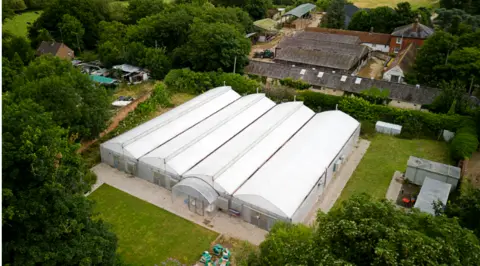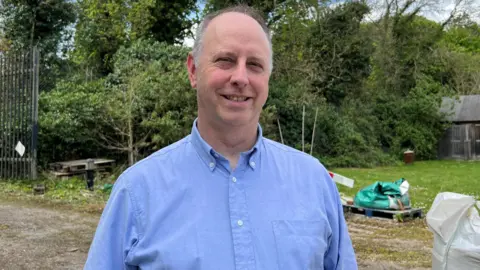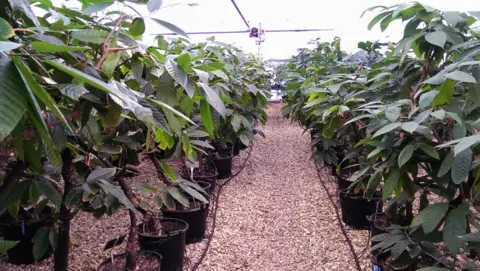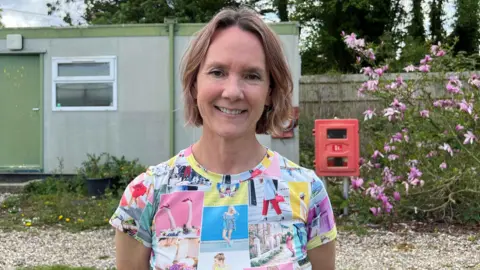Helping to protect the future of chocolate
 The International Cocoa Quarantine Centre
The International Cocoa Quarantine CentreTucked away in a corner of rural Berkshire, some non-descript greenhouses are playing a crucial role in satisfying our never-ending appetite for chocolate.
Work carried out at the International Cocoa Quarantine Centre in Arborfield, part of the University of Reading, is helping to keep the world's cocoa crops free of viruses.
The greenhouses - about the size of four double tennis courts - contain more than 300 mature cocoa plants from South America, West Africa and Asia.
Scientists put the plants through two years of quarantine before cuttings are sent worldwide to help create diversity in breeding cocoa plants.

Cocoa beans are the raw material for chocolate production, but prices have soared in recent years, caused by climate change and crop disease.
With 30% of global cocoa production lost through major pests and diseases, the centre's co-ordinator, Dr Andrew Daymond, said new varieties of cocoa needed to be "more resilient".
"We make sure that plant material is free of any pests and diseases - that's a process that takes two years," he said.
After quarantine, researchers send cuttings of disease-free plants to other research institutes around the world.
These can be incorporated into breeding programmes to create new varieties with "built in" resistance to pests and diseases, higher yields and greater tolerance to environmental stresses.
Dr Daymond said: "It is a safe way of moving cocoa to create new types of cocoa in other countries."
 The International Cocoa Quarantine Centre
The International Cocoa Quarantine CentreMost of the world's cocoa is grown in a belt near the Equator - so why is this work carried out in southern England?
Dr Daymond explained: "It is better to do the intermediate quarantine in a colder country that doesn't produce cocoa as there are no risk of pests.
"Essentially, it is a safer place to have the facility."
Also working at the centre is Professor of Archaeology at the University of Reading, Katie Sampeck.
She is exploring the full history of cocoa in chocolate which was produced as early as the13th Century.
Her research has examined how cocoa was harvested, processed and how the pods were split open to extract seeds for fermenting.

She said: "We have been comparing the replica artefacts that we've been able to make to archaeological samples that come from the birthplace of chocolate in Central America.
"It is amazing, we think of it as a simple candy but it has a rich, complex history that we are learning much more about, just with these experiments.
"It is very surprising to be doing all of this here in Berkshire."
You can follow BBC Berkshire on Facebook, X (Twitter), or Instagram.
